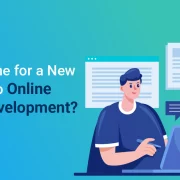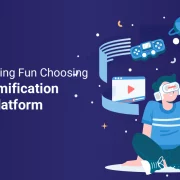
Holistic Approaches to a Student-Centered Approach and Equity in Higher Education
Summary
This blog discusses holistic approaches to implementing a student-centered and equitable approach in higher education. It talks about personalized learning, supportive services, and inclusive practices that prioritize students’ diverse needs and foster a more equitable educational environment.
The world of higher education is vast, with different kinds of support, accessibility, and practices available for different students. The need of the hour is to build equitable pathways that encourage inclusivity and equity in this realm.
Such barriers are not new but have been generated from traditional, historical, and systematic norms. Today, the education industry needs to instill actionable solutions that encourage personalized learning pathways, adaptive learning technologies, and competency-based education. This will eventually lead to student empowerment.
According to a survey in 2023, 55% of students reported that they would leave their existing college or university for another one if they eradicate initiatives around DEI – Diversity, Equity, and Inclusion. The same data also reflects how such inclusions can benefit students, especially in their future careers and earnings.
Thus, it is essential to integrate diverse perspectives from key stakeholders within the field of education like educators, policymakers, students, etc. This collaboration will help in creating sustainable and equitable pathways in higher education.
Let us quickly take a look at the traditional model followed in passive education systems and the need to switch to equitable environments in higher education!
Table of Contents:
- Understanding the Traditional Model
- The Need for a Holistic Approach
- 4 Ways to Build Equitable Pathways in Higher Education
- Conclusion
Understanding the Traditional Model
According to a survey, over half of the students felt singled out at their institution based on their identity. This is because traditional higher education employs a standardized curriculum that may not cater to the unique learning styles of all students. This was due to several factors, including:
- Limited Support Systems: Many institutions lack comprehensive support systems that address the diverse socioeconomic, cultural, and academic challenges students face.
- One-Size-Fits-All Assessment: Conventional assessment methods that favor a narrow set of skills and knowledge. This is a disadvantage for students with different strengths.
Also Read: Top 5 Data Modernization Strategies for Higher Education
The Need for a Holistic Approach
Students come from varied cultural backgrounds, each with unique perspectives and learning approaches. There is a dire need to transform the higher education system to encourage a student-centered approach.
Moreover, economic disparities affect access to resources, including study materials, technology, etc. The approach should also consider students’ prior experiences, as they massively influence their ability to engage with higher education.
Here are some key recommendations that can help higher education institutes develop equitable pathways for all students!
4 Ways to Build Equitable Pathways in Higher Education
Here are the top solutions that higher education institutions should employ to promote student empowerment through equitable pathways.
1. Understanding the Value of Prior Learning
Many students come to higher education with a wealth of knowledge and skills. Educators and institutional heads must acknowledge such experiences and encourage students’ progress. This will accelerate their learning process in the new regime. Here are some tips:
A. Encourage Prior Learning Assessment (PLA)
PLA is a process that allows educational institutions to evaluate the knowledge and skills students have gained outside academic environments. This experience could be through work experiences, certifications, individual study, or even volunteering activities. It is essential to give students credit for such additional know-how. It helps them:
- Bypass courses covering material they already know.
- Helps students complete their degrees faster.
- Reduce the number of courses they need to take, which also means lowering tuition costs.
- Boost students’ confidence and motivation.
How to Implement PLA Programs
Higher education institutions must implement PLA programs through:
- Assessment Methods
- Clear Guidelines
- Support Services like events and workshops.
B. Micro-Credential Recognition
Another way to recognize prior learning is to establish certifications for micro-credentials that acknowledge specific skills or knowledge areas. This is for students who may have obtained extra information through online courses, PDPs, or industry-specific training.
- Such certifications are proof of students’ specific skills and competencies.
- This acknowledgment can help them in the job market.
- Micro-credentials support the concept of lifelong learning.
How to Integrate Micro-credentials into Higher Education
- Develop policies for recognizing and awarding credit.
- Ensure that the skills and knowledge align with the existing academic programs.
- Partner with industry and professional organizations to create micro-credentials that are recognized in the job market.
2. Designing Performance Tasks for Transferable Skills
Educational institutions must focus on developing transferable skills to prepare students for the modern workforce. These skills can be applied across multiple environments and can help students adapt to the changing job market.
Here are some ways in which higher education institutions can design performance tasks:
A. Focus on Skills
The employment industry is rapidly transforming. Top employers consider skills like adaptability, critical thinking, problem-solving, communication, and collaboration. Educational institutions must focus on content and skills by following these strategies:
- Create tasks that mimic real-world scenarios. This requires students to apply their knowledge and skills in practical situations.
- Design projects that involve multiple steps and stages. This encourages students to plan and reflect on their work.
- Develop clear criteria that assess content knowledge and key managerial skills.
B. Encourage Cross-Curricular Collaboration
Cross-curricular partnerships help students come out with their exceptional transferable skills across different subjects. This includes integrating knowledge and skills from various disciplines. Educators must promote global collaborative projects that can promote innovative thinking.
Strategies for Cross-Curricular Collaboration
Here are some actionable steps that institutions can take
- Encourage faculty from different disciplines to form teams and develop performance tasks.
- Design common themes that require students to use varied knowledge and skills from multiple subject areas.
- Create assignments that involve components from different courses.
For example, you can create a project on STEM and Humanities that requires students to design a technology solution to a social problem. Such a project will help them use their engineering skills along with ethical capabilities.
3. Encouraging Collaboration Through Cross-Curricular Offerings
It is essential to prepare students for the interconnected nature of the real world. This can be done using the following two techniques:
A. Breaking Down Silos
Traditional disciplines operate in isolation, which can restrict the students’ exposure to interconnected ideas and skills. However, if modern higher education institutions combine content and skills from different areas and help students understand complex issues, this can reflect reality and prepare students accordingly. Moreover, students find cross-curricular courses more engaging as they involve practical application of their learning.
An example would be the integration of Art and Mathematics. Such an amalgamation can help students appreciate the mathematical principles behind artistic techniques. This concept builds creativity and analytical skills.
B. Introducing Interdisciplinary Projects
It is integral to enhance collaboration between interdisciplinary projects. This means:
- Leading to more comprehensive solutions
- Applying knowledge across different subject areas
- Enhancing problem-solving skills
- Preparing for demanding careers that require the ability to work across disciplines
- Institutions can implement Interdisciplinary Projects
- Encouraging faculty from different disciplines to collaborate on various projects
- Developing an integrated curriculum that includes interdisciplinary projects is a critical aspect
- Using project-based learning to understand interdisciplinary projects, use real-world applications, and encourage teamwork
Let us use the example of Healthcare Innovations. If students across all streams – math, art, science, humanities, commerce, and engineering, collaborate, they can develop innovative healthcare solutions that are relevant to each realm.
4. Building a Support System for Equitable Access
Implementation and introduction of equitable pathways in higher education isn’t enough. Organizations must introduce support systems that address the diverse needs of all students. Here are some tips:
A. Introduce Holistic Student Support
This service should include:
- Academic Mentoring: Guiding course selection, degree planning, and academic challenges
- Career Counselling: Offering career counseling and resources to help students explore career options and connect with potential employers
- Financial Aid Assistance: Ensuring the meritorious, deserving, and needy students have access to scholarships, grants, and loans
- Mental Health Resources: Providing access to students on counseling, stress management, and mental health workshops
B. Promoting Technology for Personalized Learning
It is crucial to use rich cloud-based platforms and adaptive learning technologies that adjust the content and pace of instruction. A personalized approach helps students learn and implement knowledge and skills more effectively.
Higher educational institutions must also implement LMS platforms that track student progress, and help them with relevant resources and recommendations. Other suggestions are:
- Adopting technology-enabled advising tools to monitor student progress in real-time
- Using data analytics to gain insights into student behavior, performance, and needs
- Providing virtual options and flexible support to students who may have scheduling conflicts or prefer remote communication
Case Study: Hurix Digital Develops 100 Interactive Learning Programs for a Leading US-Based Education Institution in Just a Year
Investing in a Brighter Future
Higher education is not limited to obtaining knowledge and skills. The modern system of education, which is revolutionized by globalization and digitalization, is more about promoting skills-based education, cross-curricular collaboration, personalized learning pathways, and technology-enabled advising.
The education industry is full of diverse talents who bring a wide range of perspectives. Such magnanimity in the sector promotes creativity and innovation. It has become a necessity for higher education institutions to recognize and value diversity, inclusion, and equity to promote a more equitable educational system.
Contact the experts at Hurix Digital and learn to embrace diversity in higher educational systems that prepare modern and tech-savvy students to study, work, and live in a multicultural world. To get more details, get in touch with us today!

Vice President – Learning Strategy and Design
I design student-centered learning experiences that spark curiosity & deep understanding. Passionate about bringing pedagogy & technology together!



